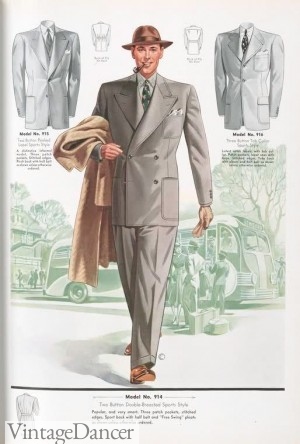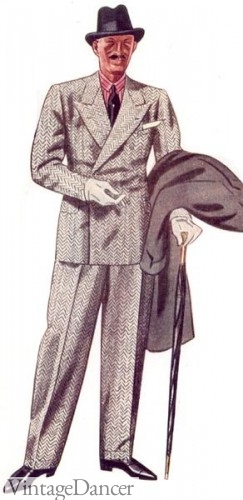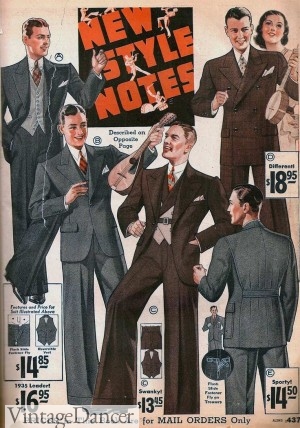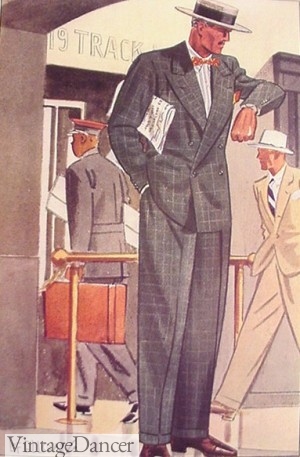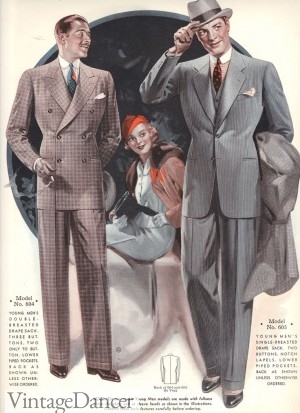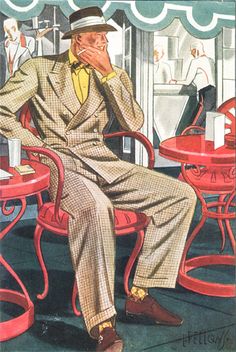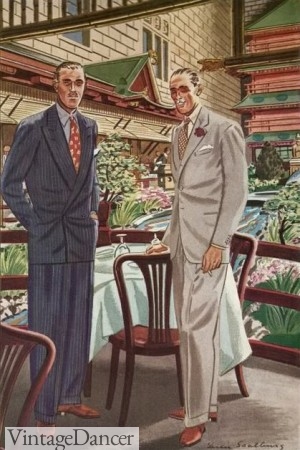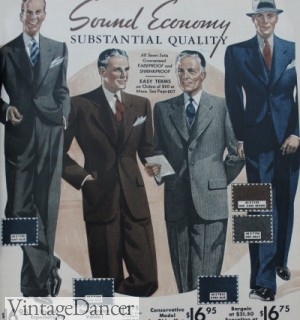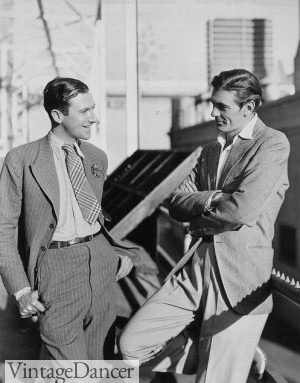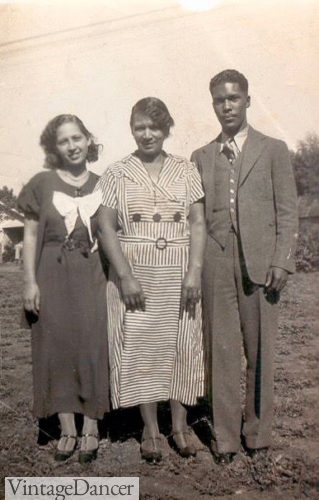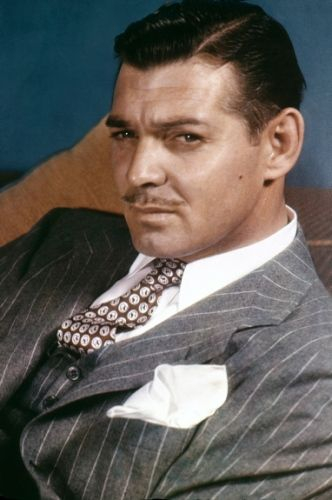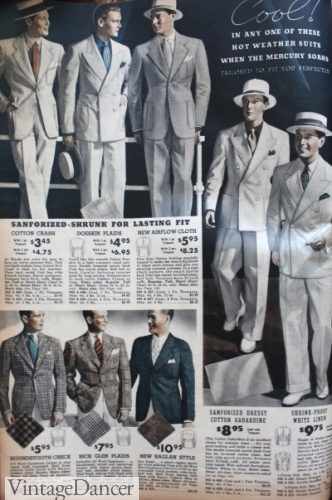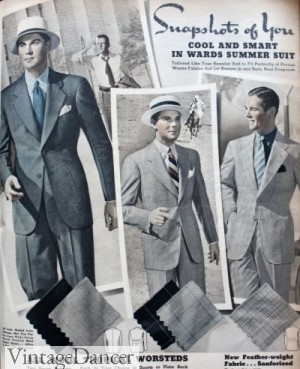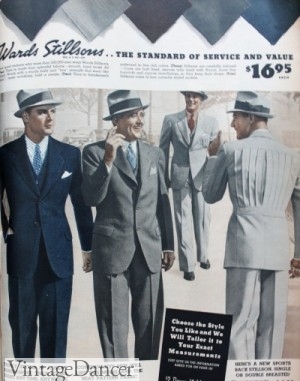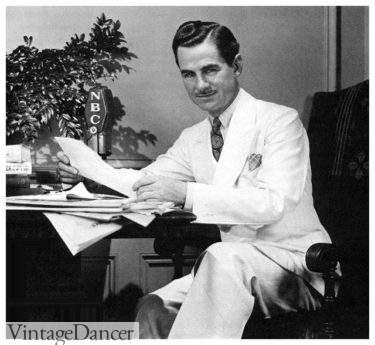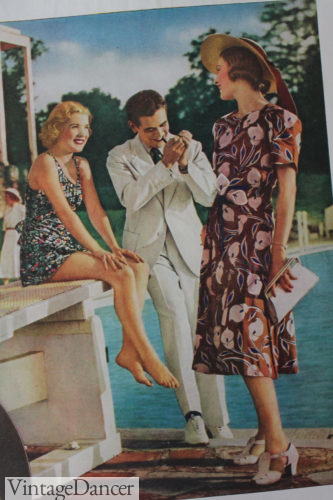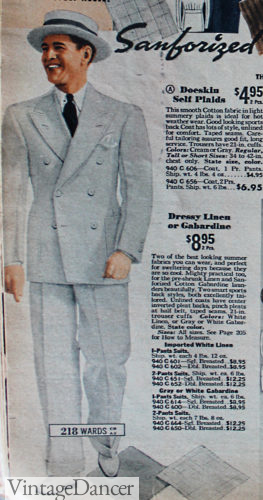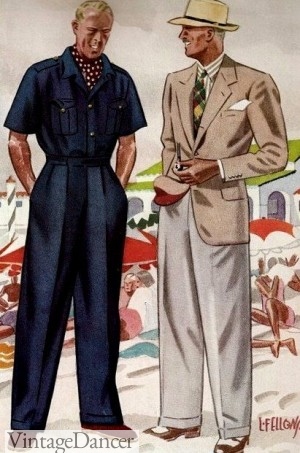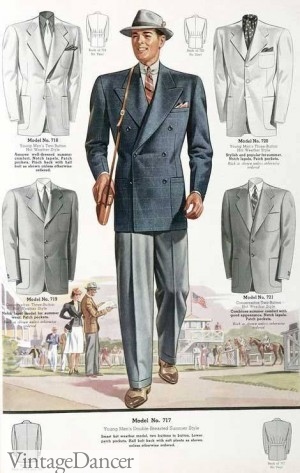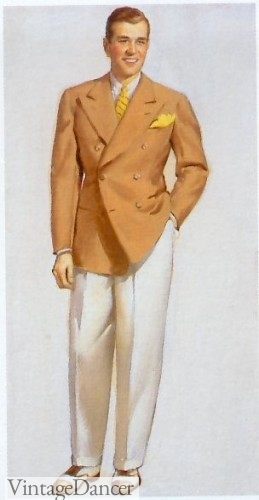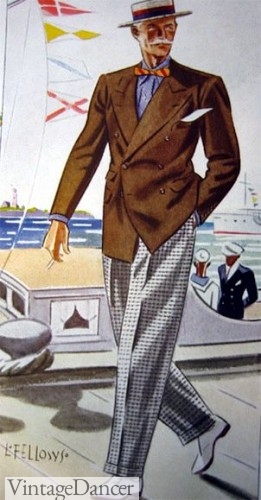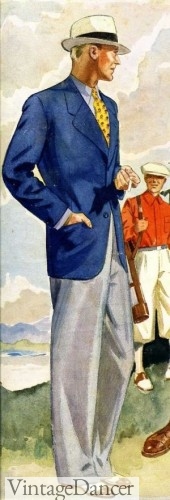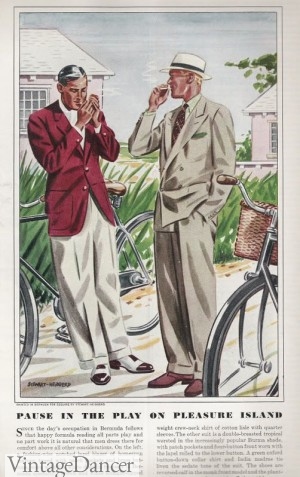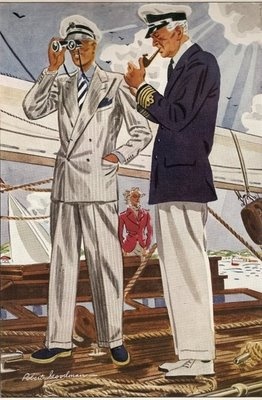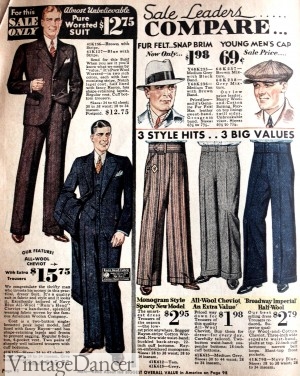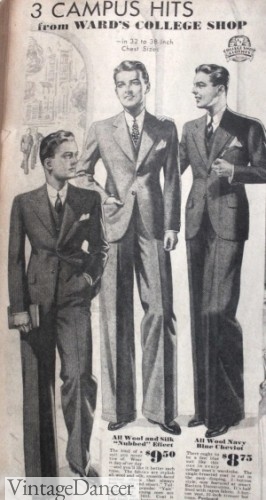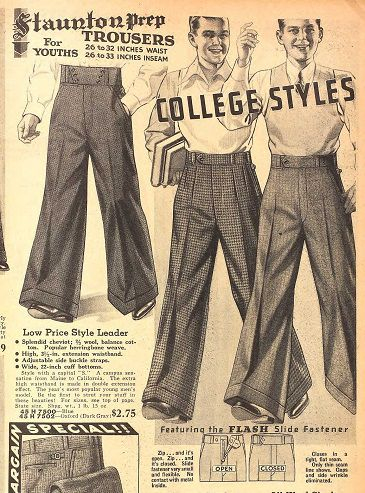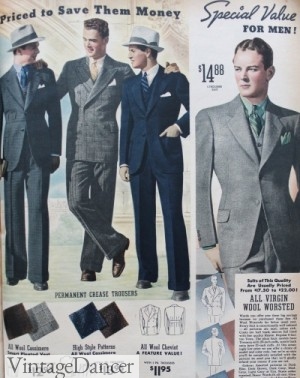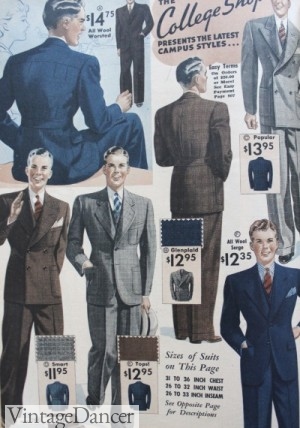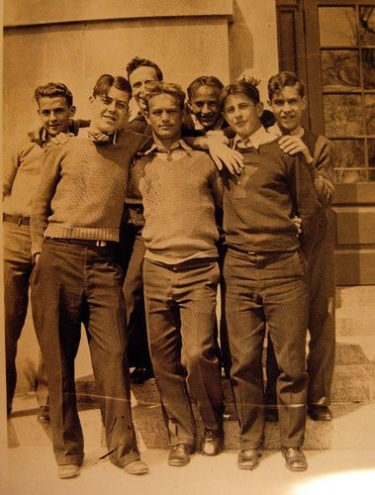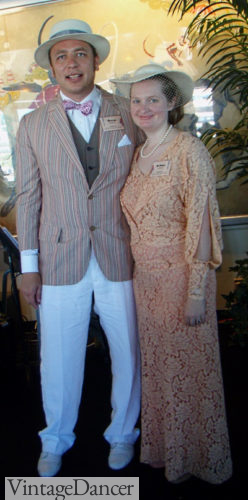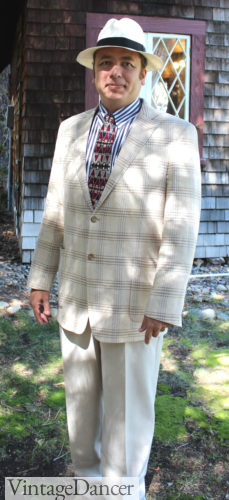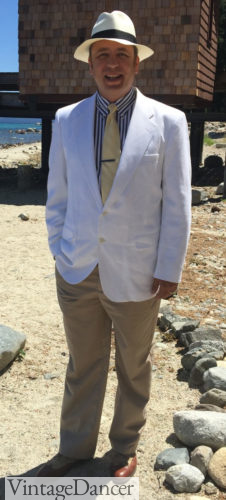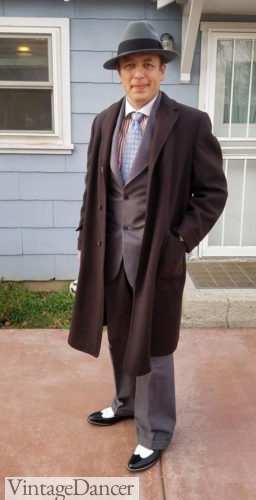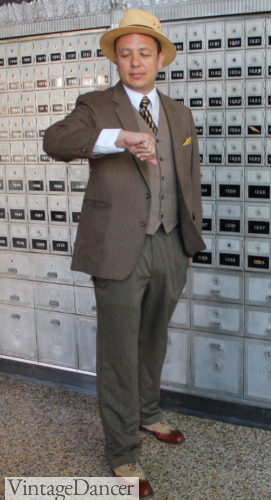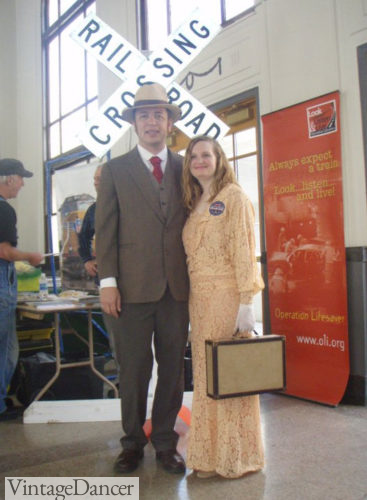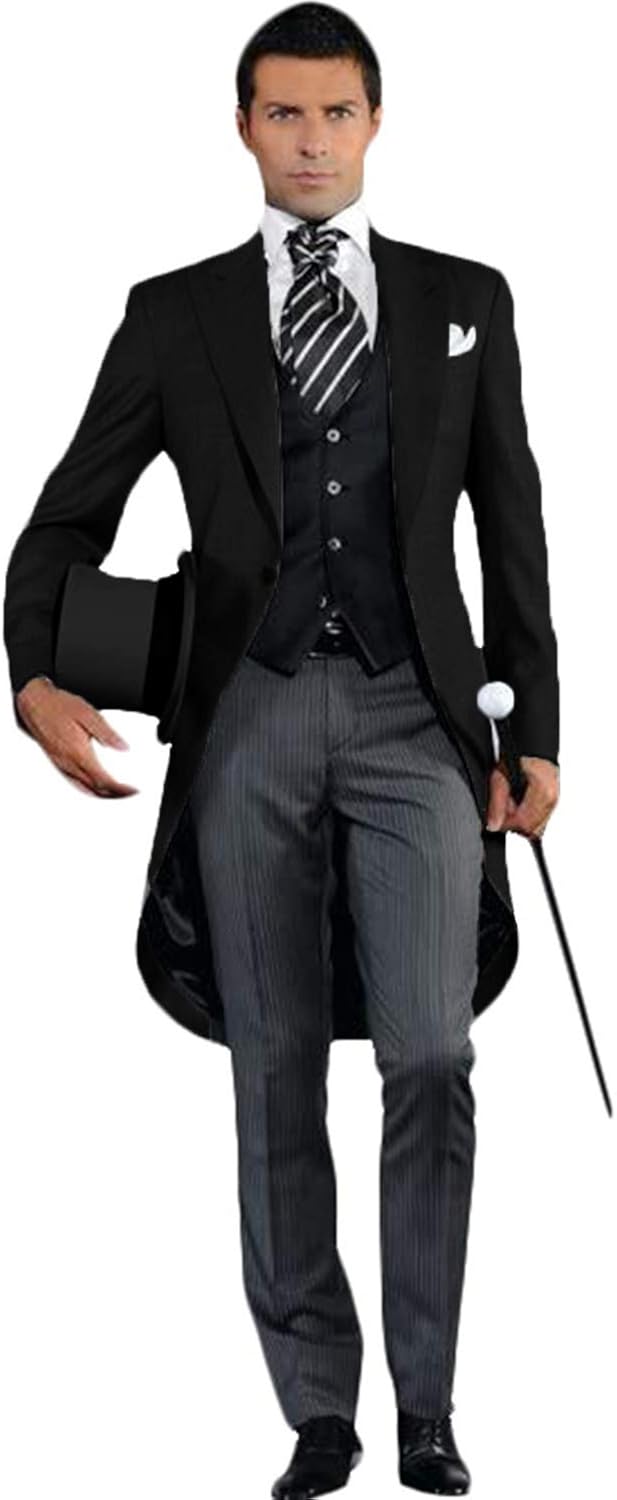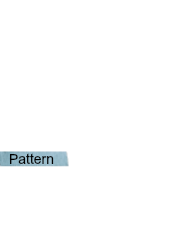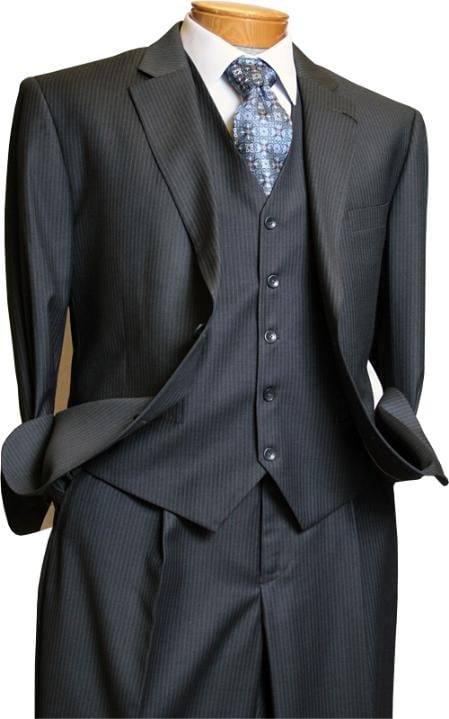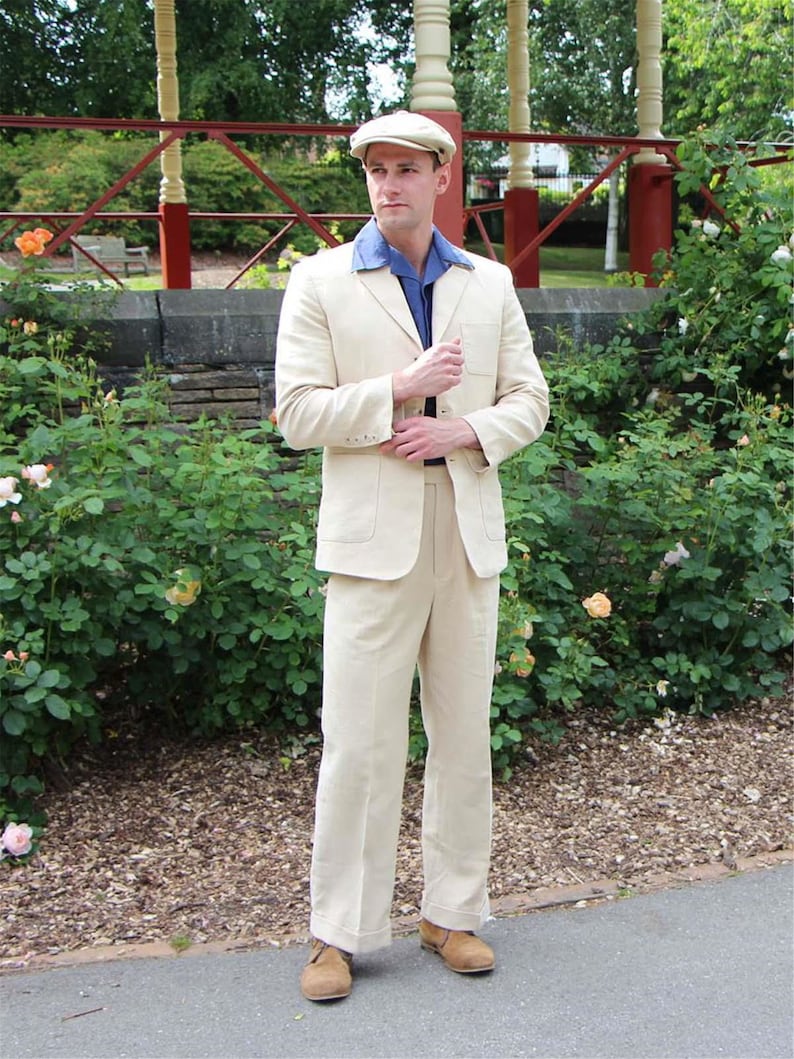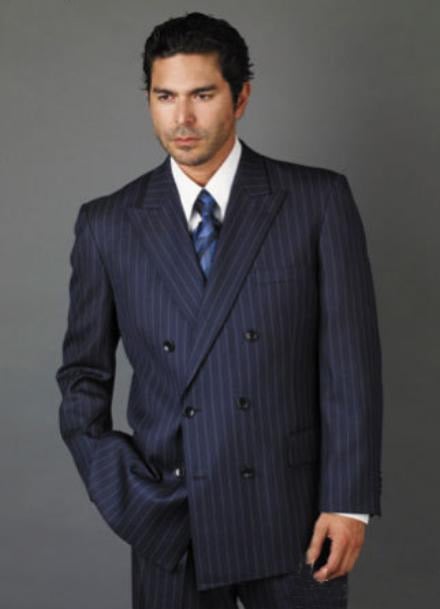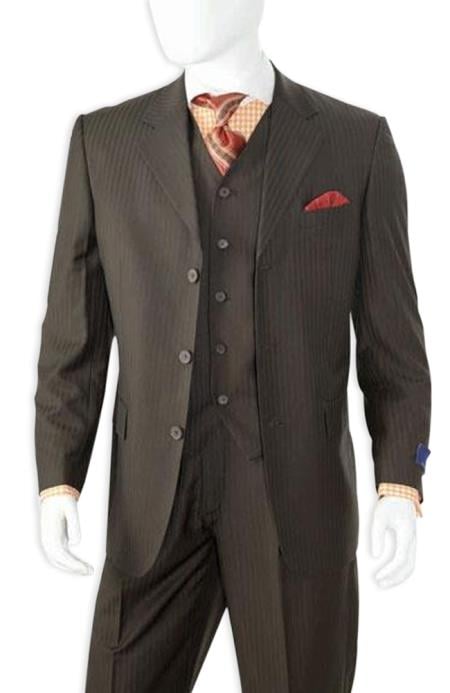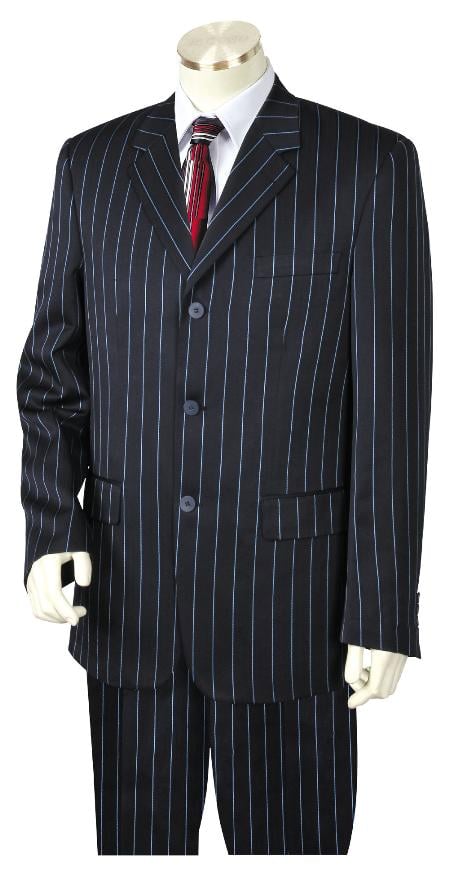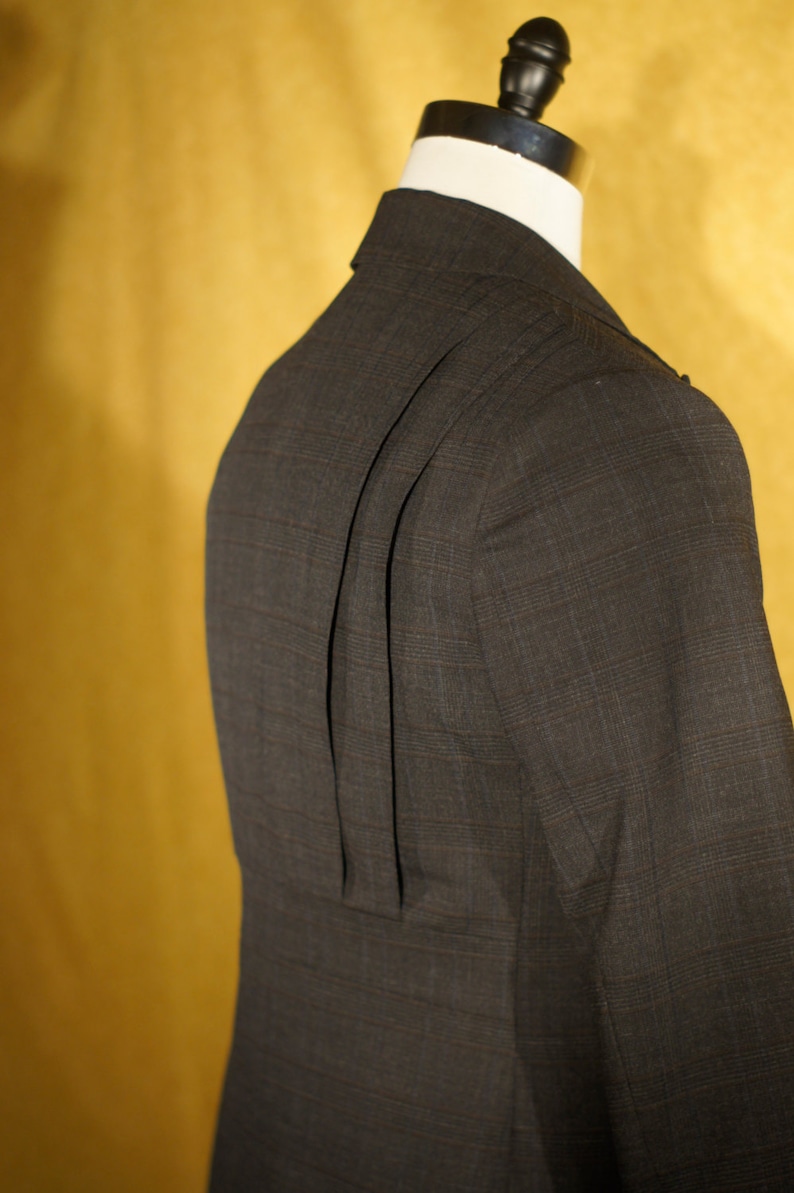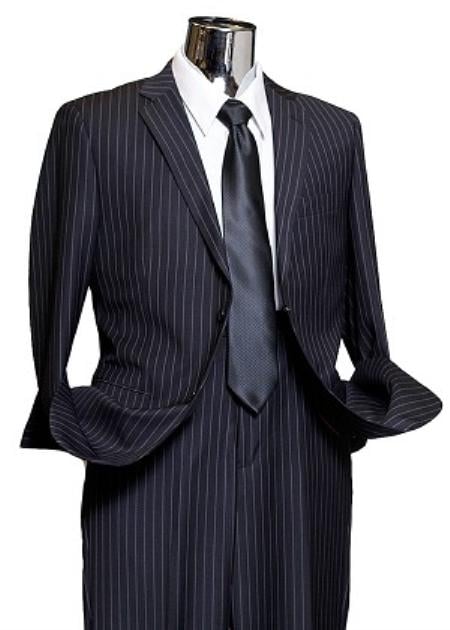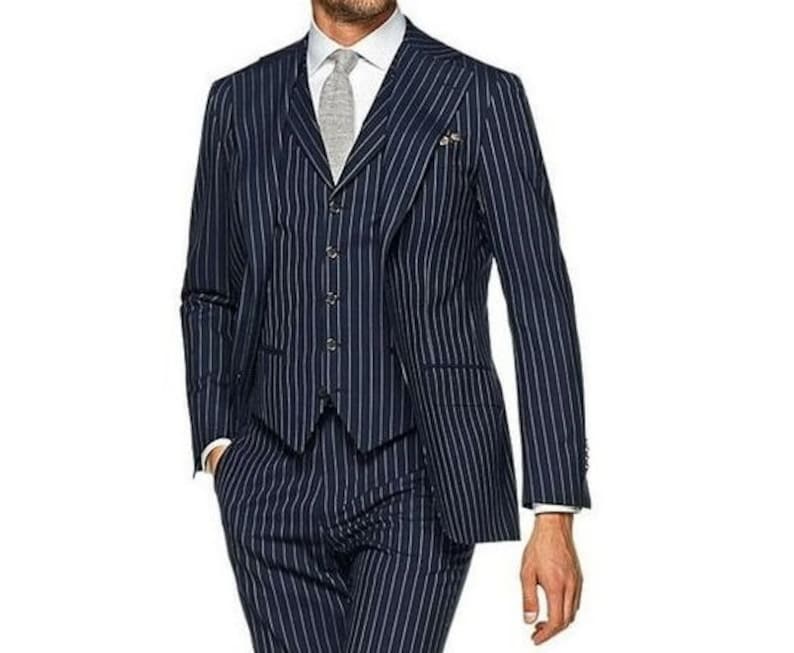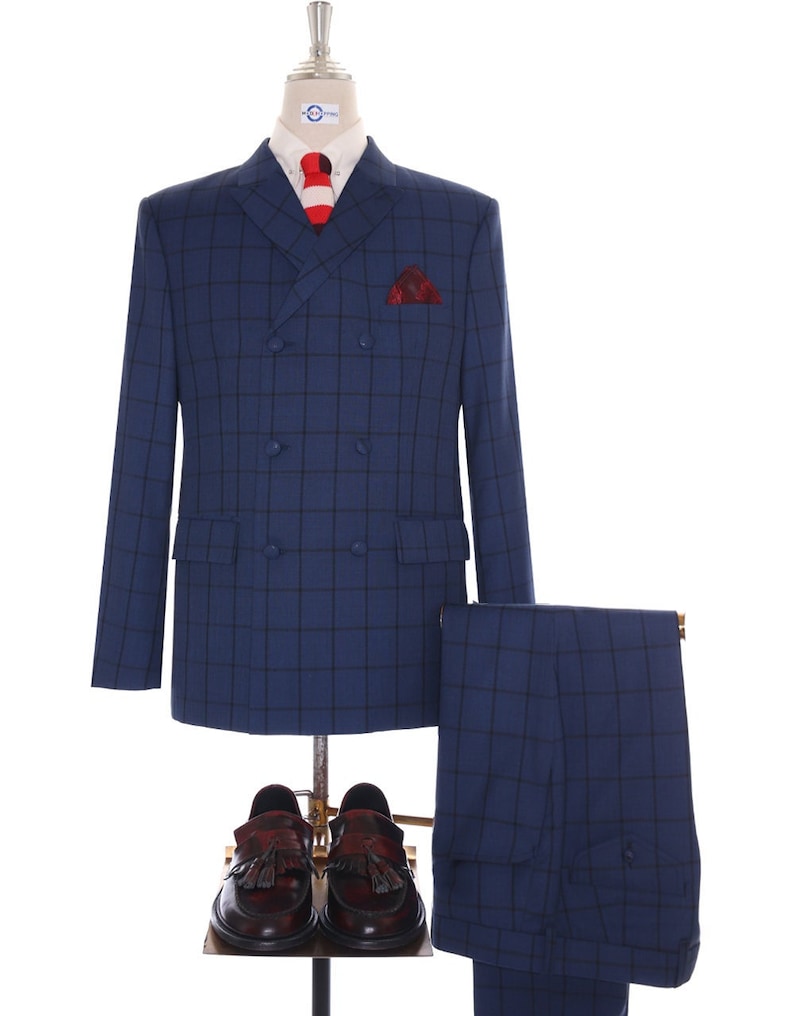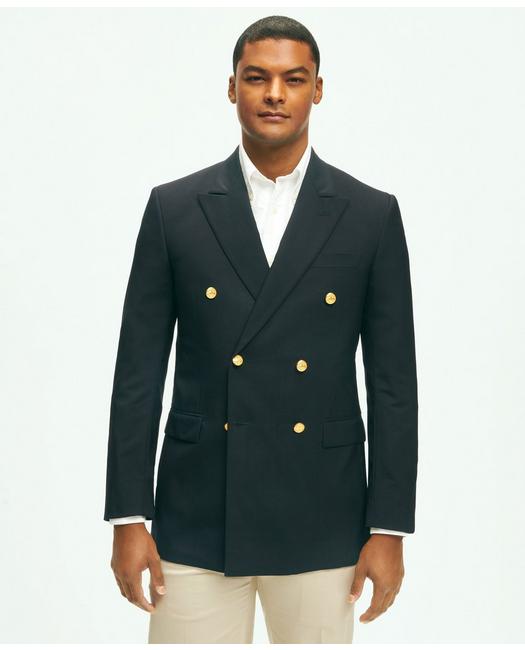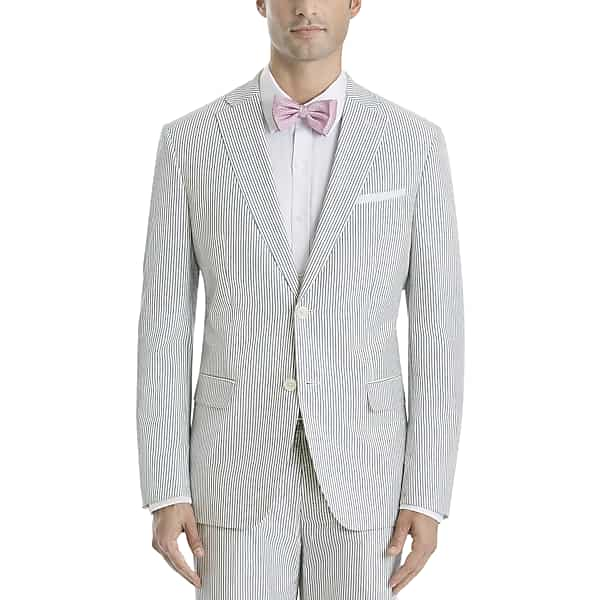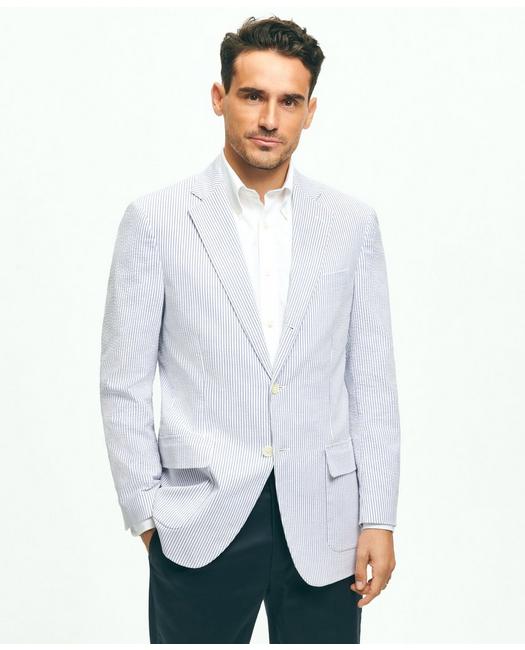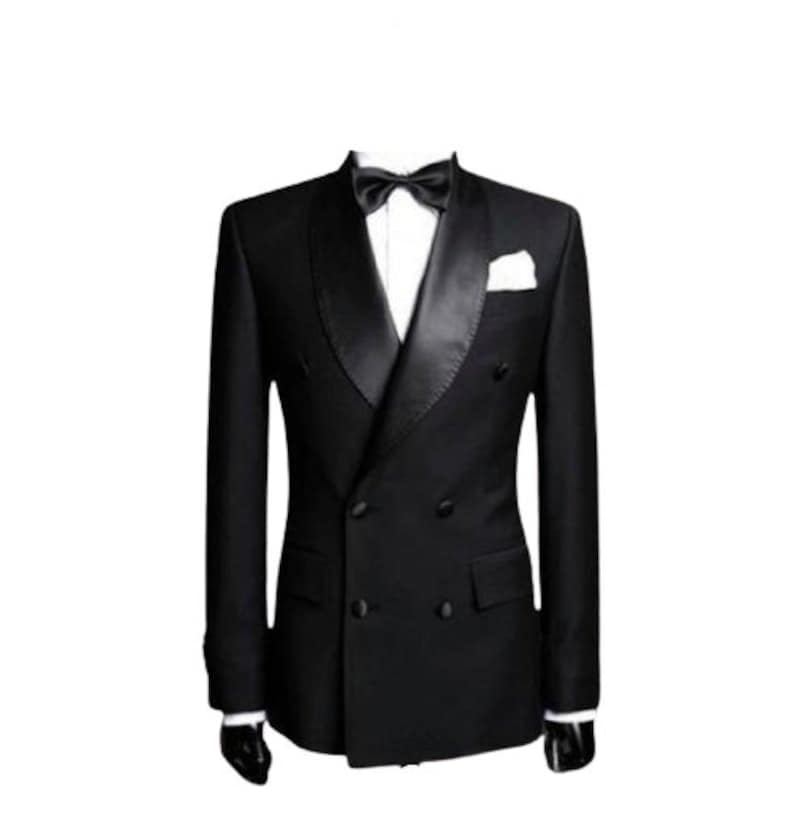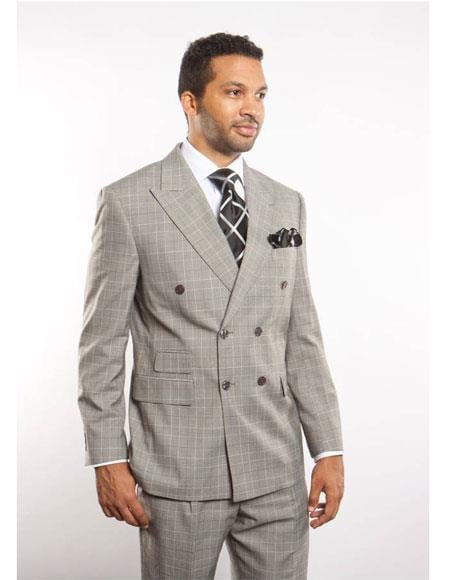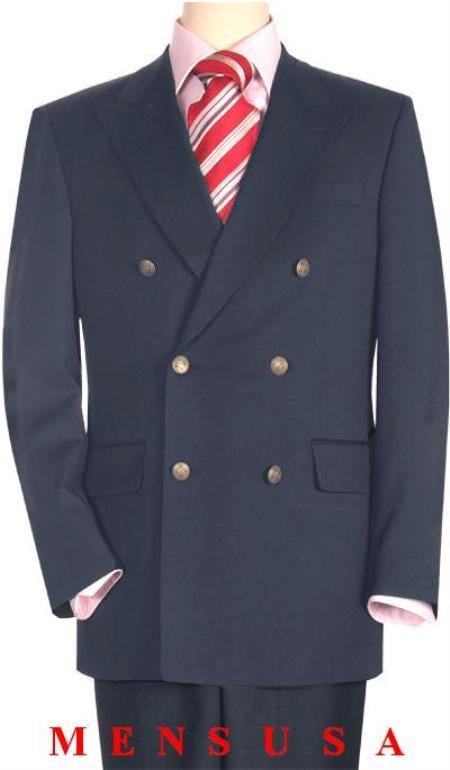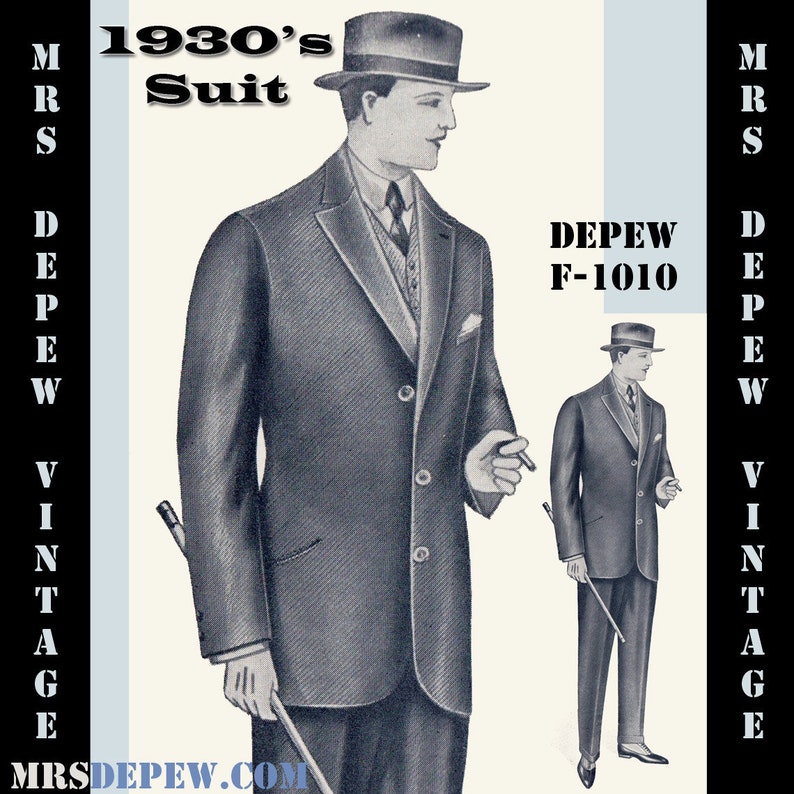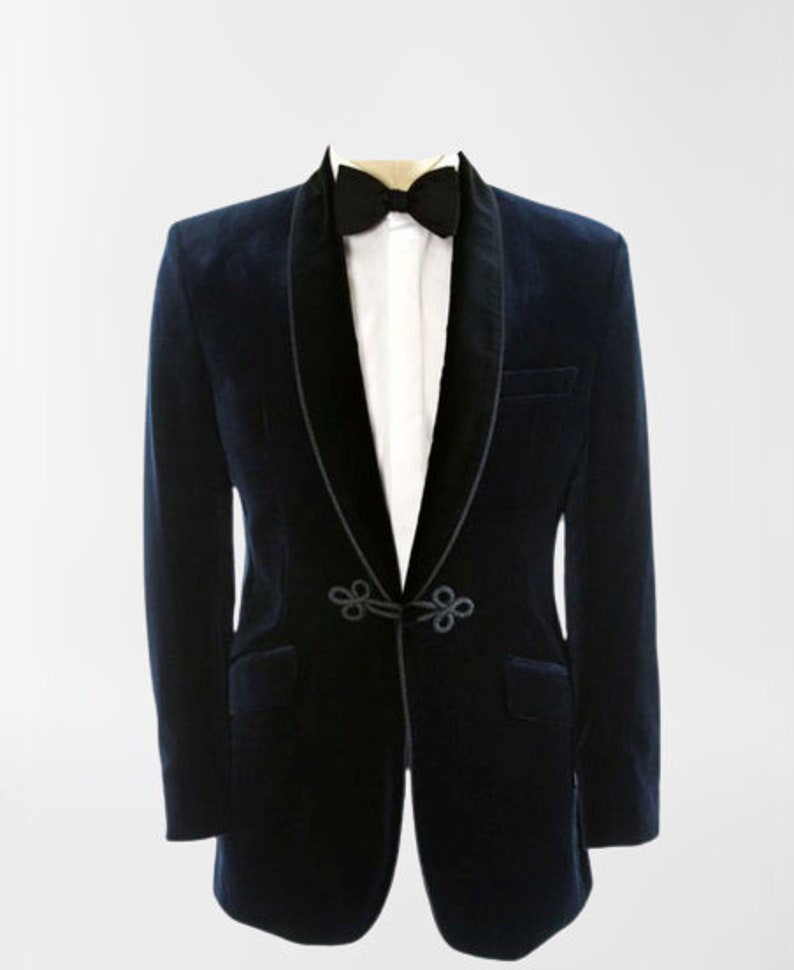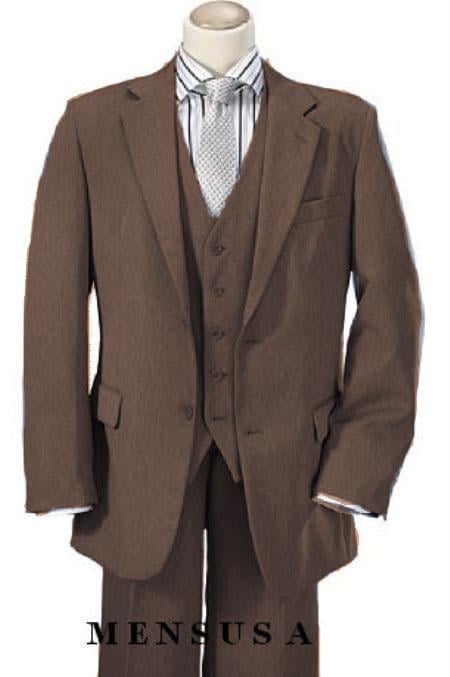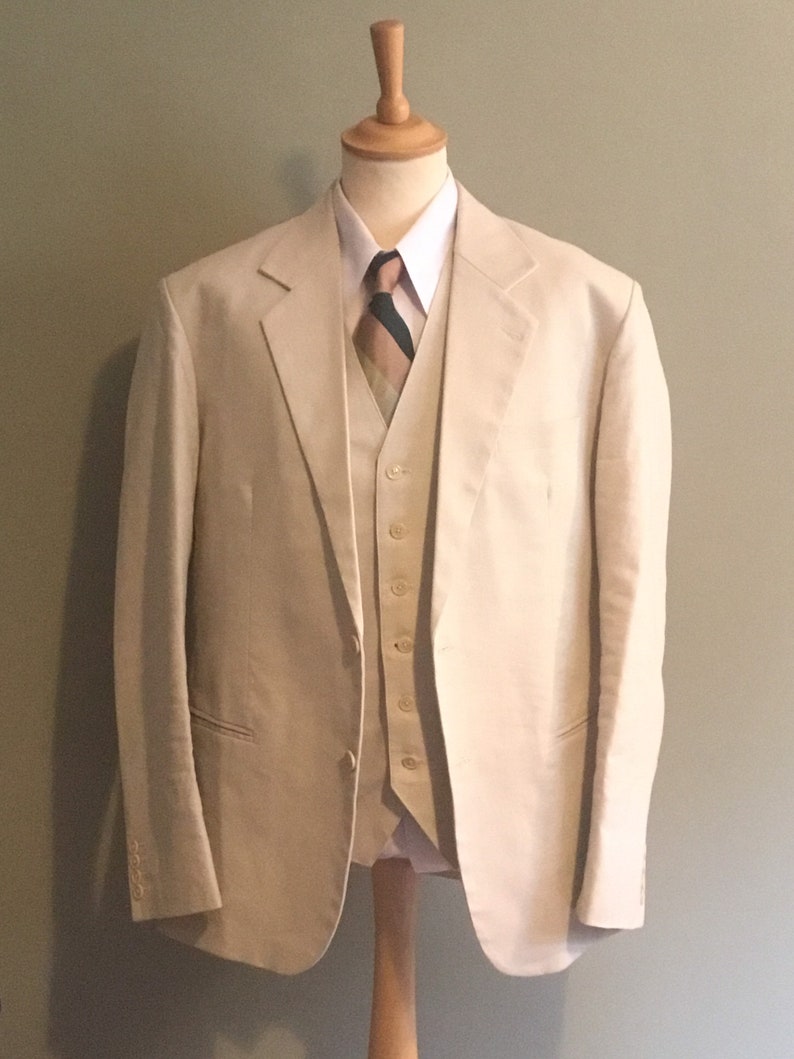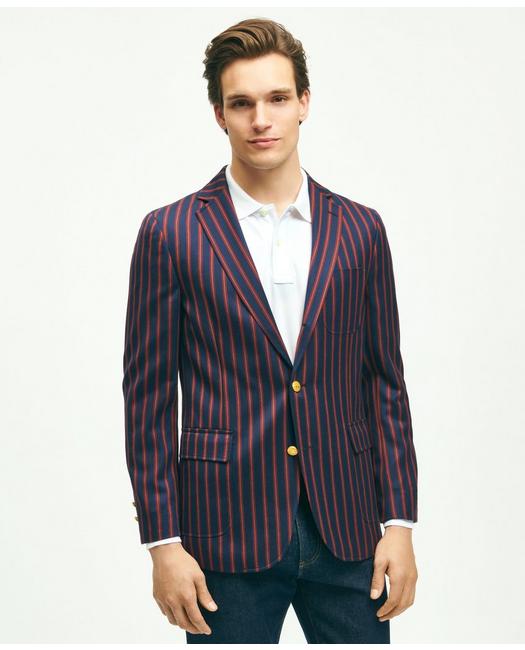We are preparing for a few 1930s events this year, which means doing some fashion research and buying some new vintage style 1930s clothes. My research always begins with my collection of vintage catalogs. For the 1930s, fashion illustrations by Laurence Fellows are also excellent sources of inspiration. Today, I wanted to share with you some of these color illustrations and catalog scans, specifically looking at 1930s men’s suits, and adding some history as well.
1930s Men’s Solid Suits
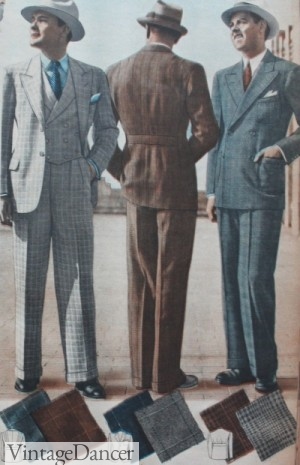
1937 Men’s Suits for Spring
What I love about men’s 1930s suits is how wide they fit. The illustrations make them appear even wider than in real life, but the idea is the same. Men’s 1930s fashion dictated that all suits needed to have a strong masculine presence. The athletic form with wide shoulders, narrow waist, and full legs was the style of the decade. Suits were cut to add the illusion of both height and width. Jackets were long with wide padded shoulders and wide lapels. The double-breasted suit was especially good at adding width. Both single- and double-breasted remained popular throughout the entire decade.
Suit pants fit high on the waist, bulged out over the thigh and knee and tapered into the ankle, usually with a cuff. Pleats at the waistband allowed more fabric to drape down, creating a baggy effect. A single pressed line down the center of the leg (both front and back) added to the height effect. This style was the opposite of today’s skinny suit.
Most suits came with a matching 6 button vest, with or without lapels, and four slit pockets. Most were single-breasted vests, but a few still chose the more formal double-breasted waistcoat with two pockets. They were not required to be worn, and typically only were worn by older gentlemen or savvy dressers.
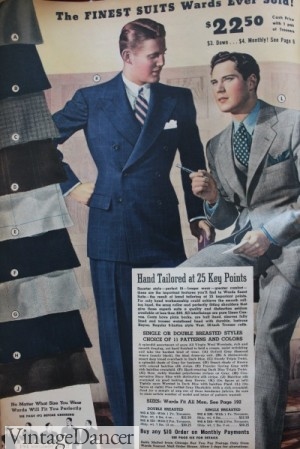
1937 Men’s Spring and Summer Suit Fabrics
1930s men’s suits colors favored medium blue, tans, beige, cream, golden browns, and many shades of grey in spring and summer. Fall and winter enjoyed navy blue, medium brown,, and dark grey tones. Besides color, the 1930s man wore suits with distinctive patterns.
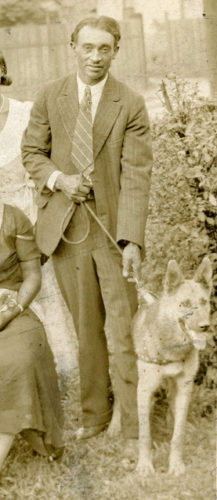
A bold striped suit
Bold patterns also contributed to width. Large plaids, windowpane, chalk stripes, checks, and herringbone appeared in every color year-round. The difference between ’30s patterns and ‘20s patterns was the overall tone. The 1920s loved clashing colors in their patterns, while the 1930s were more subtle with lighter or darker shades of the primary color. For example, a light grey plaid suit would have medium grey lines. In the 1920s, those lines might have been blue, green, or brown.
- 1930s Double Breasted Suit
- 1930s Herringbone Suit for Fall
- 1934 Men’s Winter Suits
- 1935 Plaid Suit for Spring
- 1935 Men’s Fashion Suits
- 1935 Men’s Windowpane pattern summer suit
- 1930s Men’s Summer Suits
- 1937 Men’s Spring and Summer Suit Fabrics
- 1937 Men’s Winter Suits
- Cecil Beaton and Gary Cooper 1930s mens fashion suits
- 1935 wool suit
- 1938 Clark Gable in a pinstripe suit
The Summer Whites Suit
In summer, men still wore suits. They were made of a lighter weight wool or seersucker to beat the heat. White was very difficult to keep clean, so most men chose a grey tone instead. It’s a very becoming color, too. Subtle patterns of windowpane, plaid, and stripes were still prevalent in summer colors.
- The 1930s Palm Beach look, white on white
- 1937 Tropical Weight Suits
- 1937 Men’s Summer Suits with pleated half back
- Lowell Thomas, 30s palm beach suit
- 1938 summer white suit
- 1938 double breasted white linen blend suit
1930s Men’s Mismatched Sportcoats
There was a break from men wearing matching pants and suit jackets year round. Now men had the choice to mix colors and patterns. It was both for fashion and economy — the Great Depression was in full swing, and men needed to make a few suits look like a big wardrobe. Mixing pants and jackets happened in the fall and winter, but I see it more in the summer fashions.
The general rule seems to be if you wear a patterned jacket, the pants need to be solid, and vice versa. An all solid color suit was OK, too, but less common. Also, the darker color goes on top. Pants were always lighter unless the jacket was white, in which case the pants are darker. In summer, light grey, ivory, or light tan pants were the preferred colors. The navy jacket over white pants had been a summer staple in the 1920s, too. It was associated with yachting (a rich man’s sport), but came to be acceptable general summertime fashion.
- Tan sport coat over cream pants
- Men’s Double Breasted Blue suit jacket over grey pants. Variations of the jacket were available.
- 1930s Sport coat and white pants
- 1933 brown sport coat over black and white check pants
- Summer navy sport coat over grey pants
- 1937 maroon sport coat over cream pants
- Summer “yachting” look
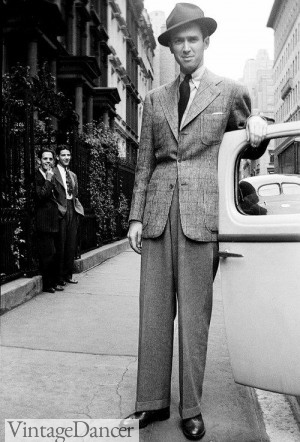
1939 James Stewart in Plaid Sportcoat over dark pants
The College Men’s Style
If there was one source of men’s fashion trends in the 1930s, it was from young college kids. The Ivy League style was set in the 1920s but was continued well into the 1930s. At first glance, the styles for young men and older men don’t seem very different. This is one area I need to do more research in.
One thing I do notice is the pants. The young men favored a wider leg pant with a wider waistband. The fit was a straight leg rather than a tapered leg, and the overall look was more slender than traditional men’s suits. Perhaps looking too athletic detracted from their youth.
- 1931 Fall Suits for College Men
- 1933 Men’s Suits for High School and College Men
- 1935 College styles with Hollywood waistband
- 1937 College Men’s Suits
- 1937 College Men’s Suits
- Early 30s college men in sweater and flat front trousers
1930s Men’s Formal Fashion
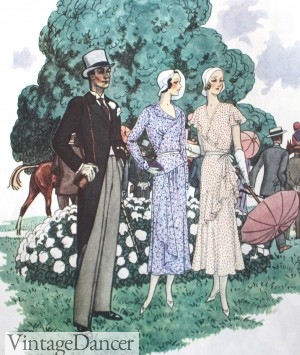
1931 Men’s Morning Suit
The most formal daywear was a men’s morning suit. It was a traditional look passed down over the past few decades with its peak heyday in the early 1900s. Very few men continued to wear morning clothes in the 1930s. It was reserved for formal morning or afternoon events before 6pm by the wealthy classes. Horse races, as pictured here, were one such event. They were also more common in Europe than in America.
The morning suit consisted of striped grey trousers, a black tailcoat (morning coat), white wingtip shirt, top hat, patent leather shoes, black tie, white pocket square, white gloves, and often a flower boutonniere.
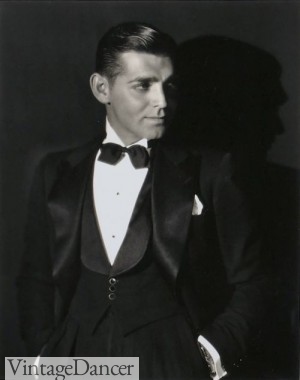
1930s Clark Gable In Black Tie Formal Wear
Men’s evening formal wear was very diverse. Instead of one look worn by every man as was in the 1920s, the 1930s had several looks. A tailcoat could be worn with black or other dark colored trousers for a formal look. The next step down was the black tuxedo, which by this point was called a dinner jacket. Worn with black trousers, a black vest, a white button-down wingtip shirt, a black bow tie, and white pocket square, it was and is the most traditional formalwear style.
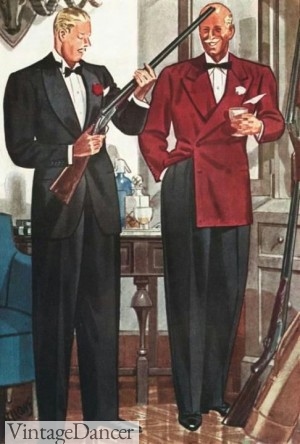
Mens Formal Wear- Tuxedo and Dinner Jacket
Dinner jackets could also come in dark colors, such as the above deep red jacket, in single- and double-breasted styles. The white dinner jacket over black pants was also a new look in the 1930s and one which screams Old Hollywood fashion.
For history and examples of 1930s men’s evening attire, look here.
1930s Style Men’s Suit Fashions Today
My advice to myself and anyone looking to recreate a 1930s suit look is to choose the pattern over the fit. It is not easy to find wide suits in a skinny suit world, so instead, look for a classic fitting suit with a distinctive but not in-your-face pattern. You can go with a single- or double-breasted suit (I prefer double). Mixing jackets and pants will be the easiest look to achieve when shopping at thrift stores. The current modern trend does favor patterned sport coats, but rarely matching pants. Luckily, all you need is a light pair of solid color pants and you’ll be ready for the 1930s.
Here are two looks we recently put together for a spring and summer 1930s event.
- Striped Sport Coat and White Trousers
- Windowpane sport coat and cream trousers
- White jacket and tan trousers
- Repro 30s suit and overcoat
- Thrifted 30s Outfit – Mismatched Brown Jacket, Vest, and Green Pants
- 1930s Daytime Suit
More info:
Read a general history of men’s 1930s fashion here.
Find vintage reproduction men’s clothing here.
Shop 1930s style men’s clothing – new clothes with classic vintage style. Suits can be found here.
1930s Style Men’s Suits
Shirts | Trousers | Ties | Vests | Tuxedos | Shoes | Hats
Debbie Sessions has been teaching fashion history and helping people dress for vintage themed events since 2009. She has turned a hobby into VintageDancer.com with hundreds of well researched articles and hand picked links to vintage inspired clothing online. She aims to make dressing accurately (or not) an affordable option for all. Oh, and she dances too.
